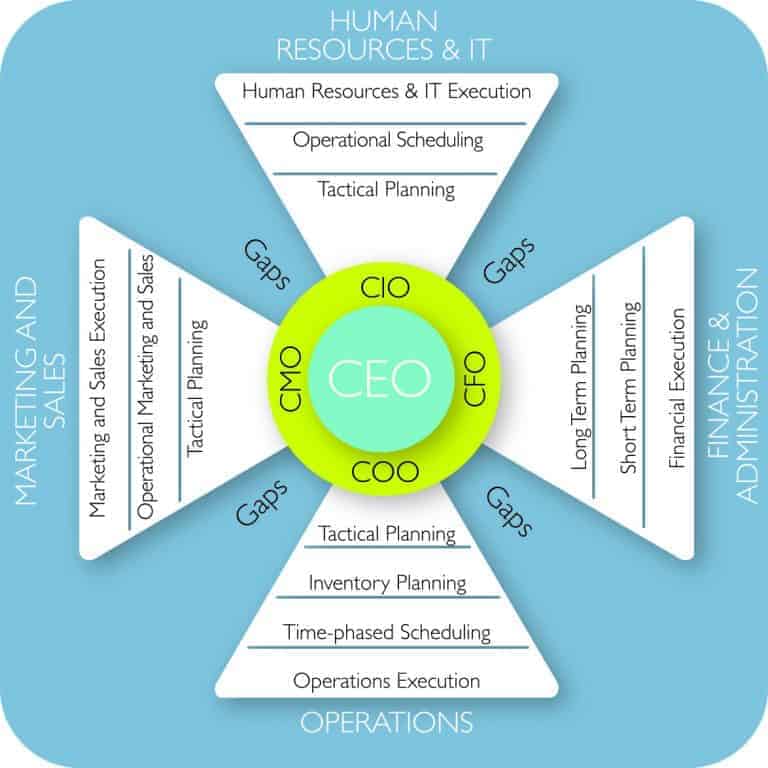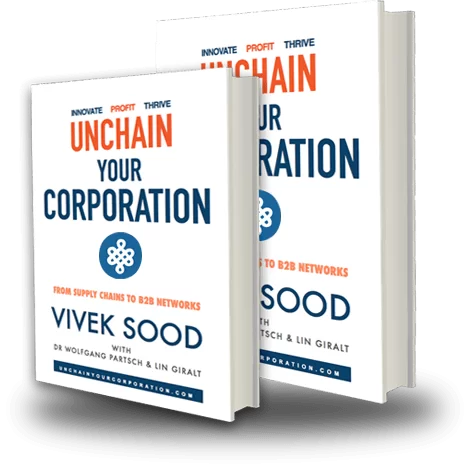Topic:The 5-STAR Business Networks
Interviewer: Ric Bratton of This Week In America
Interviewee: Vivek Sood of Global Supply Chain Group (author of The 5-STAR Business Networks)
Here is the entire transcript of the interview:
Ric Bratton: Welcome back everybody! This Week In America, thank you for joining us! Our website is www.thisweekinamerica.us.
As promised, coming up in a program an interview with the man who has the world’s most interesting job. He once was a ship captain like Captain Phillips,
had a real-life fight with pirates at sea and now he helps CEOs and their companies with business transformation to boost profits and do it rapidly.
He has more than 400 projects, they’ve spent approximately 84 countries and 5 continents with clients ranging from Fortune-500 companies to innovative green-technology companies.
And he says he has more fun every day at work than he could ever imagine. Vivek Sood – our guest back on the program, representing “The 5‑Star Business Network” – that’s his book.
Vivek, welcome to the program, it’s great to have you with us!
Vivek Sood: Thank you, Ric! It’s a pleasure every time to talk to you.
Ric Bratton: Oh, it is! Are you still having fun every day?
Vivek Sood: Oh, yes! The fun never stops, this is a beautiful job. Like I said last time, doctors save lives and we save livelihoods.
Ric Bratton: That is so true. When you go in and you are able to offer a lifeline to some of these companies, it really has to mean so much to them. Vivek’s website is www.5starbusinessnetwork.com. The book is called “The 5‑Star Business Network”. Information, of course, is on our website www.thisweekinamerica.us. Let’s start off by talking about something very important, we touched it last time. You said that the world economy is changing forever. It should get people’s attention, that is now changing forever. Talk about that. Why all of a sudden we are seeing this shift?
Vivek Sood: Ric, there are many factors. I guess the biggest factor really is Internet or connectivity. Global connectivity has made services and knowledge available to people, that was never available before.
In a way, basically, you cannot trade on information asymmetry or, in other words, the arbitrage opportunity.
The ability to fool somebody, because you have more information than them, does not exist anymore. That is probably one of the biggest shifts that has happened on a global level.
Along with that, of course, China and India, two very big nations, each one of them is 1.3 billion people or so, they are now finally joining up the global economy after about 150-200 years of being in hiatus.
Such a massive shift is definitely going to cause an upheaval in the global economy, there are no two ways about it.
Ric Bratton: I mentioned that you’ve worked in a number of countries,
Vivek Sood: Ric, the best US companies are still the best in the world, there is no doubt about that. You look at companies like Amazon or Apple, they are definitely some of the best companies on earth.
But there is also another hard fact, that US being a very large country of nearly 300 million people, as well as a very rich country, has never had to look outside its shores for business.
Small to mid-sized enterprise, even a large enterprise really looks outside US almost as an addendum to its core business.
So US is seen as the core business and the rest of the world are seen almost like incidental business.
That is probably one of the biggest problems that a shift to globalization hasn’t happened in the minds of many large companies, let alone small or mid-sized companies.
Ric Bratton: Our guest on This Week in America is Vivek Sood. His website is www.5starbusinessnetwork.com and his book is called “The 5‑Star Business Network”. World’s foremost authority in global supply chains. And let’s talk about that. Exactly what are we talking about when we are talking about global supply chains?
Vivek Sood: OK, global supply chains are very easy. You look at an iPhone, iPhone 6, for example, which has just been released by Apply.
Obviously, one of the biggest markets for their product is the United States of America, but when you look at the product itself, well, it is designed in California.
The parts come from all over the world, there are companies in Taiwan, in China, in Malaysia and many other locations, which are manufacturing parts, which finally are assembled in a place in China.
And that’s how this product is being made, and then it is being sold all over the world.
Now that is a massive shift from how computers were manufactured when Apple first started manufacturing the computers in California. So that’s what I mean by globalization of supply chains.
Ric Bratton: How are businesses responding to the shift? Are most of them on top of this?
Vivek Sood: Some are, definitely, like Apple, the example I just gave you.
They are totally on top of it. They are not only using global enterprises to manufacture, they are also using the global enterprises to design, in fact,
even understand the consumer preferences around the world and create products that are acceptable to consumers around the world.
Others are still thinking of it in a very narrow way, where people inside the company are telling the CEOs. I can even give you an example of a Korean company, which is one of the biggest competitors to Apple,
they are still thinking in a very narrow way. They want to do everything in house, perhaps just within a small national boundary.
And the more they are trying to do that, the more they fall behind their competitors.
Ric Bratton: Vivek Sood is our guest on the program on This Week in America. We are talking about his book “The 5‑Star Business Network”.
Business-to-business network, something that we talked about on the last program, you talked about in the book and something you stress as being really important.
Explain exactly, how that is. It sounds very simple, and some businesses go “yeah, I’ll get a Facebook page and I’m part of this new wave, this new phenomenon”.
Talk about business-to-business networking and how it’s done right.
Vivek Sood: OK, so what people think of LinkedIn or Facebook as very large networks, which they are and they are very useful as well.
But when you look at business-to-business networks, the scale is absolutely staggering, it’s mind-boggling.
Facebook is about, let’s say, a hundred billion dollars. But when you look at just one industry – let’s say, automobile industry, the global supply chain of automobile industry runs into trillions of dollars.
So all the ancillary unit providers, which are based in Far East, for example, combine that with all the assemblers and designers, and suddenly you have a global supply chain,
which is worth trillions of dollars and works like a clockwork to put the next model of automobile out in the market place.
This is just one example, you can think of chemicals industry, you can think about pharmaceutical industries, you can think about retail industry, – each one of them has a very diverse,
a very widespread, very tightly neat global business-to-business network, a global supply chain, where the enterprises are working together with each other to put the final product in the hands of the consumer.
Ric Bratton: You’ve said that most miss the network that is hidden in plain sight. When you think about it, it’s sometimes too obvious, you are trying to make it more complicated than what it is.
Vivek Sood: I’m actually trying to make it simpler than what it is, Ric. In the end, they are actually very complicated networks.
Think about it this way: today, if you wear a leather jacket, the cow comes from somewhere, the leather is tanned somewhere else, after that it is cut in another place, perhaps 2 thousand miles away from there.
Then it is stitched into a jacket in another place, and finally it is packaged and sold in totally different place. It is far more complicated than most people actually think.
And management of that global scale as well as scope of business-to-business network, and actually extract profits out of it, it is an art and it is a science, it doesn’t happen just by coincidence.
Ric Bratton: Vivek Sood, our guest on the program. His book is called “The 5‑Star Business Network”, his website is www.5starbusinessnetwork.com. Of course, this information is available on our website www.thisweekinamerica.us and you can link on directly to Vivek’s website and get information. Why do so many companies seem to get it wrong and struggle?
Vivek Sood: Ric, look at what is happening inside the companies.
If you look at the senior executives or CEOs, they have come through the ranks in pyramid structure and they are used to work in a particular way.
They face very intense pressure, by the way from their investors, from the Wall Street, who want the profits, who want to take advantage of the shift in the global business scenario.
However, when they go internally to talk to their own teams, the internal teams basically have done business in only one way in the past, and that is the only way the know of doing business.
So what they see around them, if you are a C-level executive, you see a massive waste around you, you see a massive loss of opportunity.
And you just don’t know how to wrap your arm around it, and how to actually squeeze the waste out of the system, and how to actually get rid of the confusion and complexity.
That is perhaps their biggest blocker, in my mind.
Ric Bratton: When you go in and you deal with companies, – and I mentioned at the beginning that you deal with companies of all sizes, all around the world, – when you go in and start laying out your ideas,
and again, you mentioned that sometimes the corporate culture is very slow to respond, what kind of response do you get when you go in and you say: “OK, here’s what I think you should be going,
here are the changes that really need to be made to be competitive on a market place today”? What kind of response do you get?
Vivek Sood: Ric, the most important thing we do for our clients is basically get rid of the complexity. So what we do is very clearly, we lay out the supply chain in a very systematic manner as it exists right now,
and then we look at several different models of supply chain within their industry, but also outside the industry and we have now a track record of 50 years of doing this in our company for a variety of industries.
We have these models in our mind, but we also work with the internal teams to create this permutations and combinations. And finally we choose the best model that works for this particular company.
In each case, inevitably we end up saving humongous amount of money for the C-level executives and their companies.
Ric Bratton: You know, what’s interesting is, so often you hear of companies and when they decide to go through a transformation, it’s downsizing, it’s reducing force, it’s redundancies, things like that.
Can you downsize your way to success?
Vivek Sood: Never, very rarely. In fact, in my view, if you have come to a point where you have to go through mass redundancies and just last week a very large IT company had to declare mass redundancies again,
in my view, it’s already too late. Somebody has missed the obvious writing on the wall, the massive waste within the company was overlooked for long enough,
so that the situation has come to a point where the knee-jerk reaction is that the Wall Street or the investors want results. And what’s the quickest way to get results?
Let’s do downsizing. But that’s a very temporary solution. In the end, that will end in eroding the core competency of the business itself
Ric Bratton: We talked about the companies, which are getting it wrong and struggling.
Let’s talk about some of the companies, that you could say they are doing it right, and how they are doing it, because they are thriving and they are positioned to take advantage of this global economy.
Vivek Sood: Oh yes, there are lots and lots of companies that are doing it, and I continue to have this conversation with companies and work with them.
Yesterday I had a very interesting conversation with three different companies, each one of them is a massive company, and each one of them is actually on the path upwards!
Yes, many of them are sort of trying to stumble their way into that kind of new paradigm with new supply chains, but many others have become very systematic about it.
How to take a supply chain, from supply chain 0.0 to supply chain 1.0, to supply chain 2.0 and then further on to supply chain 3.0. Now these are all a little bit technical terms,
I understand that, but there is a massive difference between these. It’s almost like three different models of an aircraft.
Ric Bratton: Interesting! Vivek Sood, our guest on the program, his book is called “The 5‑Star Business Network”, it’s available on Amazon, all across the country, all the places where books are sold, and at his website, which is www.5starbusinessnetwork.com. Information available, of course, at our website. Vivek is a supply chain corporate strategist, managing director of the Global Supply Chain Group. A couple of minutes left of the program, let’s talk about some of the benefits of business-to-business networks. We’ve talked about the role it’s going to play in this transformation, it’s a network that’s there for you. Let’s talk about some of the benefits, tangible benefits that businesses will see, trying to engage their business-to-business network.
Vivek Sood: Absolutely. So, Ric, first thing is of course, as you cut out the complexity, you create much better understanding of the very complex business-to-business networks and supply chains in the business.
With this understanding comes the ability to manage, the ability to control, ability to actually have much more influence that you ever had before. That’s probably the first benefit.
Once you have an influence, you can actually start moving the ship in the right direction. I used to work in a ship, so imagine, if every time you turn the radar, you don’t know which way the ship is going to turn, just because you don’t have the control.
Once you have that kind of control, you can actually start taking ship in the right direction.
And, of course, with that comes higher profitability, much happier customers, for example, because your service levels are much better.
More innovation, creating better products faster, working with your suppliers and suppliers’ suppliers, as well as working with your customers to create products that the consumers actually want,
to get higher margins on those products, to actually customize the supply chain in a highly segmented manner,
where each supply chain is structured for a particular customer segment and getting the maximum profitability out of the segment,
because now they’re much happier with what they’re getting than they were ever in the past. I see this on a daily basis, by the way.
Ric Bratton: Yeah, and this is not theory that you’re dealing with, you had over 400 business transformation projects and the success rate of 100%.
So you are actually able to take this into the market place and literally turn businesses around. I’m sure, keep some businesses fluid and allowing them to hire people, to keep the business going.
Vivek Sood: Absolutely, that’s what gets us out of bed every morning.
It’s like a doctor who is very happy about saving lives as we’re saving livelihoods!
In the end, having that kind of impact on businesses and creating much more effective as well as efficient businesses is rewarding itself.
Ric Bratton: Well, it’s a pleasure to have you back on the program. Vivek Sood, the book is called “The 5‑Star Business Network”, his website is www.5starbusinessnetwork.com. Information, of course, at our website www.thisweekinamerica.us. The book’s available at Amazon, all across the country and you can order the book by going to the website www.5starbusinessnetwork.com. Vivek, it is always a pleasure! Thank you so much for joining us, look forward to having you back on the program. Thank you and keep smiling!
Vivek Sood: Thank you, Ric! Very nice to talk to you again! And have a very good day!
Ric Bratton: Thank you! I love the passion for what you are doing, it’s a pleasure to have you on the program!





